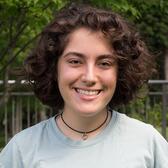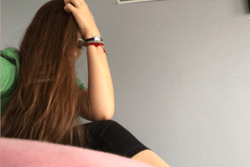Reclaiming Shtetl Life in 2016
In looking forward into my near future, I’ve seen it fit to look into my distant past for inspiration and as a guide. I’ll soon be leaving my childhood home and will be tasked with forging a life and identity separate from that which I had with my parents. I’m an Ashkenazi Jew, one that has always felt connected to the “old country,” so to say. I’ve grown up immersed in childhood folk tales of Jewish life in pre-WWII eastern Europe, my interest encouraged by my Holocaust-historian father. What stood out to me the most in these stories is the delicate ecosystem of the shtetl, a small Jewish town or village in eastern Europe. I was (and still am) enchanted by the images and ways of life of the shtetl: sprawling orchards, simple and humble townspeople, an emphasis on learning, and caring, if a little nosy, neighbors. In an attempt to not only maintain, but strengthen this connection to my ancestors, I have recently made a resolution to embody the values and ideals that characterized shtetl life.
I’ve outlined a few ways in which I intend to embody shtetl culture below, but I would first like to offer a disclaimer. I am writing this piece as a tribute to the lives of Jews like those in my family who lived in the shtetl, but have no intention of romanticizing the very real and oftentimes dangerous experiences of those Jews living in eastern Europe from the 16th century to the early 20th century. Shtetl life isn’t Fiddler on the Roof. Pogroms, economic restrictions, violent outbreaks, political and ideological revolutions, repressive gender norms (not all the time, but that’s for another piece), intolerance of social or political deviants, and mistreatment of mentally ill individuals were all part of the lived realities of shtetl life and I have no intention of trivializing them or brushing them under the carpet. Additionally, as an Ashkenazi Jew, this narrative resonates with me, but in no way represents the experiences of all Jews. Not every Jew is descended from eastern Europeans, nor does every Jew have Jewish ancestors. In this piece I am exploring my Jewishness, not that of all Jews.
I am privileged to live in the 21st century and in a metropolitan area in the United States, but also sometimes experience a sense of nostalgia when I think about the types of lives my great grandparents led. In handling this nostalgia I’ve identified a few ways that I can pay homage to them and steep myself in the yidishkeyt and menschlichkeyt that defined their lives.
The first step in this involves something that is already in motion for me—engaging in radical politics. There is a long tradition of Jewish youth, both in the shtetl and in the post-immigration era, engaging in radical, left-wing politics. Despite the centuries that have elapsed, in my lifetime I have witnessed truly impressive revolutionary movements led by youth and young people. I’m not leaving home to fight, I’m not starting revolutions, and I’m not overthrowing government regimes, but I believe that the radical, DIY, queer, and activist spaces that I’ve been a part of are modern-day versions of such actions.
An especially meaningful manifestation of this shtetl culture is combating and reversing the effects of assimilation in my own life and within my Jewish communities. I’ve never felt comfortable identifying as an American, and I’ve also never truly felt integrated into the wider American culture. It wasn’t until recently that I learned that I wasn’t alone in these feelings, that this experience is in fact shared by many other American Jews. Since this discovery I’ve stopped trying to blend into American culture and instead have been spending more time and energy connecting with wider diaspora Jewish culture, that of my grandparents and great-grandparents. Writing this piece is one way in which I’ve been able to do so. I’m still figuring out my next anti-assimilation steps, but as of now I’ve just been eating a lot of pickles, trying to learn Yiddish, and reading up about the rich history of Jews in the diaspora. I’m recognizing the dissonance, appreciating the discordance, and sitting tight until I’m ready to make my next move.
When I think about shtetl life, I strongly associate it with tightly knit communities in which members are deeply involved in the lives and affairs of others. This has always been something that has stood out to me as special and uniquely Jewish, something which I would like to see reflected in the spaces that I frequent. I’ve found that there is sometimes a disconnect in activist spaces, or a more fragile sense of community than in traditional Jewish spaces. Whether it be the prevalent call-out culture or simply individuals dealing with their own trauma (both of which are valid!), these communities can leave me unfulfilled. Aspects of Jewish spaces like a stronger sense of cohesion, a higher chance of having mutual acquaintances or relatives, an emphasis on intergenerational relationships and mentorships, or simply a shared history serve to create truly satisfying and nourishing communities. Some of these features are exclusive to Jewish spaces, but I can see others being easily translated into other contexts.
An additional component to the creation of community is the awareness of physical space. I believe that by tuning into the subtleties of a space: how I came to be in that specific space, who came before me in that space, and how that space has been manipulated, I can practice a type of “hereness,” a presentness that was part of my ancestors’ lives. To illustrate: I live comfortably in a house in the suburbs. My house is a testament to the upward mobility of my family since they first planted their roots in North America/Turtle Island/Anahuac. In working with and working in spaces, I have found it necessary to pause and acknowledge the tension between and intricacies of the spaces I occupy. My family started off in the shtetl, moved to the city (cities, if I’m going to be precise), moved to the suburbs, and now I will be moving back to the city for college.
Learning about and embodying shtetl life has taught me to embrace all that I am as a young Jewess and to accept the multiplicity that comes with that identity, whether or not it fits into Ashkenazi gender binaries (before or after western colonization). By reading about my shtetl ancestors and paying homage to them in my daily life, I feel a sense of empowerment that can only come with reclamation of identity. I am who I am in spite of and because of my past. I will continue to be a loud and stubborn young Jewess, if not for myself than for those that came before me.
This piece was written as part of JWA’s Rising Voices Fellowship.








You know a lot of Jews lived in cities even in the 1800s. It wasn't all shtetls.